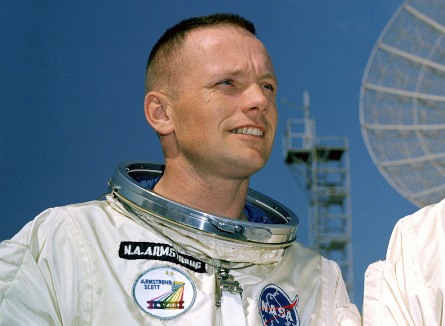Neil Armstrong, former US Navy and NASA test pilot who became the first person to walk on the moon, has died at the age of 82.
In addition to the Apollo 11 flight that made him famous throughout the world, Armstrong was a noted aeronautical engineer, recognized within the test pilot community for his airborne achievements.
Armstrong became a Navy test pilot after flying combat missions during the Korean War. His flight test accomplishments include evaluations of several experimental rocket-powered aircraft, considered among the most demanding and dangerous flying at the time.
He was among the second cohort of astronauts chosen for spaceflight in 1961, and commanded the 1966 Gemini 8 mission, later moving to the Apollo programme, where he served as backup mission commander of Gemini 11 and Apollo 8 before becoming flight commander of Apollo 11.
As commander of the flight, Armstrong was given priority over Edward "Buzz" Aldrin to take the first steps on the lunar surface. After taking pictures and gathering samples, the crew returned to Earth.
 |
|---|
Armstrong before Gemini 8. ©NASA |
After his Apollo flight, Armstrong briefly held an administrative position at NASA before retiring in 1971 to teach engineering at the University of Cincinnati, near his home in Ohio. He retired from teaching in 1979 to his farm in Lebanon, Ohio, taking periodic positions on corporate boards and participating in the investigation into the explosion of the space shuttle Challenger.
His death is reportedly due to complications following coronary surgery. Of the other eight astronauts in his astronaut group, five remain, all over 80 years of age.
Source: Flight International



















